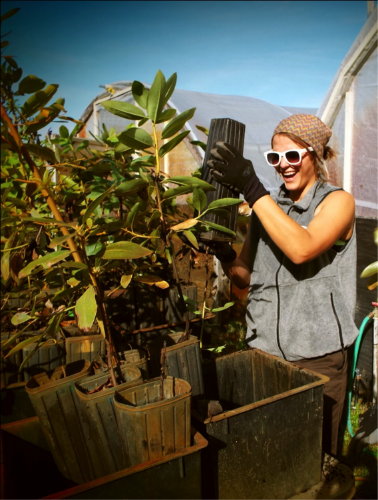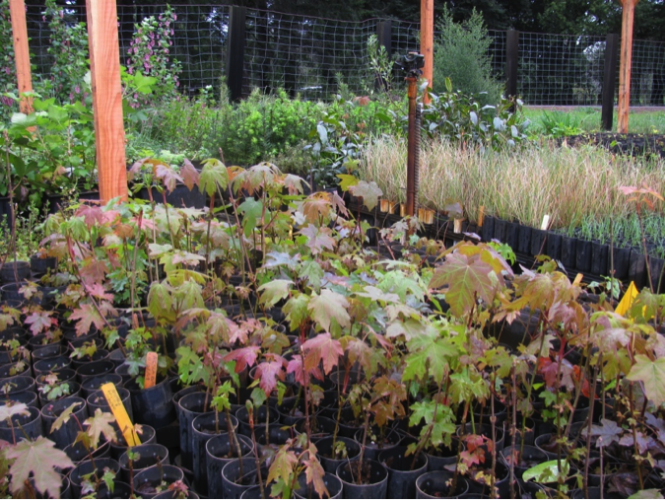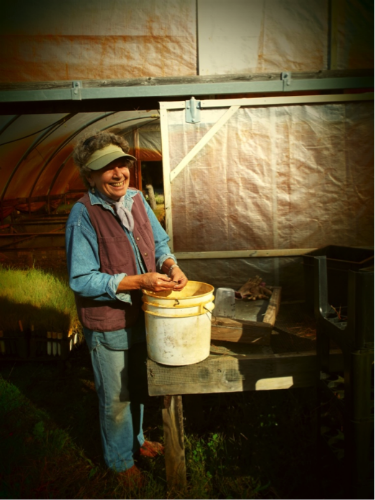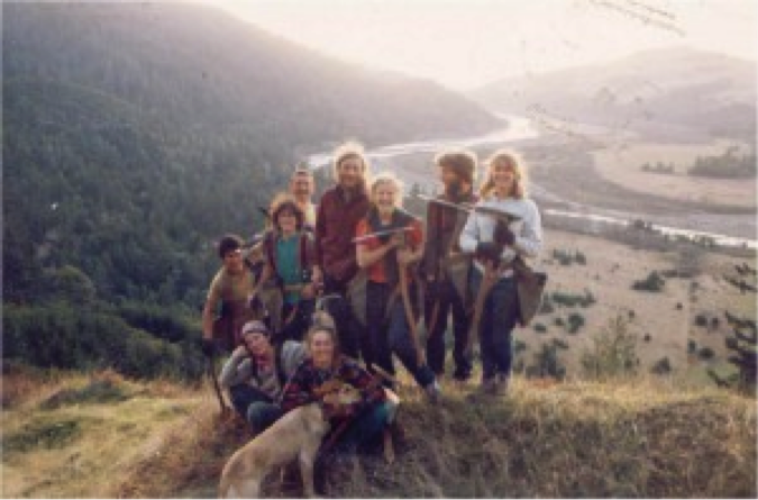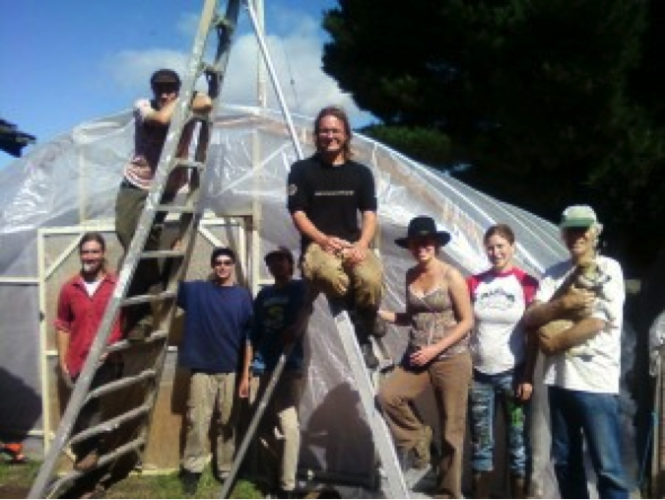Andy James
The Organization
Mattole Restoration Council, a 501(c)3 based out of Petrolia, CA
MRC is focused on: Watershed preservation or reclamation - Wildlife habitat conservation - Wildlife habitat creation - Removing invasive species - Water quality improvements - Native species promotion - Research and species inventories
The Mission
"The mission of the Mattole Restoration Council is the restoration of natural systems in the Mattole River Watershed and their maintenance at sustainable levels of health and productivity, especially in regards to forests, fisheries, soil, and other plant and animal communities.
Footage from Chad Smith, a Mattole Fisherman, and music by Boadicea.
The Mattole River watershed drains a remote 300 square mile portion of the coast ranges of Humboldt and Mendocino counties in northwest California. The Mattole enters the Pacific Ocean about 10 miles south of Cape Mendocino, draining directly into a State designated Area of Special Biological Significance, Critical Coastal Area, and Marine Protected Area. It historically supported abundant native Chinook, steelhead, and coho salmon runs and extensive old growth temperate rainforests of Douglas-fir and coast redwood. Due to extensive, unregulated clear-cut logging in 1950s and ‘60s, combined with extreme flood events and naturally steep and unstable terrain, the Mattole became polluted with excessive sediment and temperature. The watershed lost over 90% of its old-growth forests, and salmon populations plummeted to the brink of extinction.
Since the late 1970s, local citizens have worked to remediate environmental damage in an attempt to restore the Mattole’s salmon runs and forests. These efforts have coalesced into a team of three nonprofit conservation organizations which together lead watershed management and restoration in the Mattole, where there are no municipalities and limited government agency presence. The Council works with two partner groups, the Mattole Salmon Group, and Sanctuary Forest. Each organization takes responsibility for different aspects of watershed management and recovery, working closely with County, State and Federal government partners.
For more than 30 years, the Council has worked to replant our deforested and eroded watershed, replace culverts crossings and remove logging roads, and restore our natural systems to a healthy level. Today, the Council is actively working on restoring riparian communities, native coastal prairie grasslands, sustainable forest management, public outreach, ecological education in the local public schools, water conservation, and hazardous fuels reduction. The Council has worked to replant the watershed and grows between 30,000 and 50,000 native plants per year in its Native Plant Nursery to be used for our restoration projects, all from seed collected locally. In addition, the Council has created two native grass farms to generate seed for revegetation. To read about some of our restoration highlights, see:http://www.casalmon.org/salmon-snapshots/restoration/mattole-river. For a complete description of our programs, see:http://www.mattole.org/programs/.
Since its inception, the Council has been at the forefront of community based watershed restoration. The activities of the Council have been featured in numerous articles, books, and videos on ecological restoration, both locally and internationally. The story of the Mattole restoration movement is known as the first community-based restoration effort in the state of California. For a discussion of our history and unique community based approach, see: https://conservancy.umn.edu/bitstream/handle/11299/60133/7.4.Buran.pdf?sequence=1 ."
The Project
"The main focus of our project is to update the Council’s Native Plant Nursery to prevent of the spread of plant diseases, including Phytopthora rot and sudden oak death (SOD). Several species in the Phytopthora family cause crown and root rots that can wipe out entire populations of plants - it was a Phytopthora disease that caused the 19th century Irish famine. These diseases spread readily in areas without proper drainage. Sudden oak death is a disease of oak trees, which also affects more than 100 other plant species. Caused by an invasive plant pathogen, it is estimated to have killed more than 1 million oaks and tanoaks over the last ten years. Sudden oak death occurs in coastal California from Monterey to Humboldt, including several sites in the Mattole River watershed.
Although our nursery has never tested positive for SOD, it is increasingly detected throughout our watershed (entering from adjacent watersheds) and is a serious concern. Our nursery needs to develop systems of sanitation that ensure healthy plants go out on restoration projects. The risk of the spread of these diseases can be heightened in a nursery setting, where plants are propagated in close proximity and contaminated water and soil can readily move among plants if proper sanitation methods are not in place. Sanitation of potentially contaminated materials, good drainage, and good water management are essential to limiting the spread of these diseases, which can spread by moving infested soil and plant materials.
Needed upgrades include:
1. Infrastructure for better site drainage - pathogens and pests live in standing water;
2. Boot cleaning station – to reduce contamination from visitors and volunteers;
3. Soil box – elevates soil and prevents weeds or pathogens from entering potting media;
4. Soil solarization equipment - gives us the ability to re-use potting soil and cuts down on project expense and resource needs without the use of chemicals;
5. Nursery benches – elevated benches ensure plants are not exposed to contaminated soil or splashing water; and
6. Updated sanitizing equipment and set-up zero-waste wash station – to reduce contamination between growing seasons and ensure no contaminants are released from wash system.
Built by community volunteers in 2006, the Council’s Native Plant Nursery is integral in the restoration efforts of the Mattole, and plays a central role in our education and outreach programs. The nursery facility includes two propagation greenhouses which double as shade structures, a small mist house for the propagation of cuttings, an additional open shade structure, and a small shed. Much more than simply a place to grow plants, our nursery directly benefits our community and watershed. While the Native Plant Nursery is currently functional, it badly needs upgrades to ensure we are bringing the highest quality plants into our native ecosystems.
We grow 30,000 to 50,000 plants per year, including a variety of native grasses, shrubs, conifers, and hardwood trees for restoration projects. We also sell native plants to local landowners, to promote drought tolerant native landscaping in our watershed. We operate in a closed system where our re-vegetation projects are supplied with local genetic seed stock, collected in our watershed and grown out in our nursery. Growing our own plants from seed that has been collected in the Mattole allows us to use a diverse plant palette suited to each restoration site, to foster genetic diversity within species, and to grow rare and endemic species. We would not be able to accomplish our watershed restoration goals without a Native Plant Nursery.
In addition to its critical role in our restoration efforts, the Nursery acts as a base for community volunteerism, environmental education, job training for interns and AmeriCorps members, and provides seasonal work in a rural community with extremely limited employment opportunities. Each year residents of the Mattole valley, along with interns and AmeriCorps members, spend hundreds of hours volunteering in the Nursery. In 2014, nearly half of the labor was from local volunteers. This strong volunteer involvement allows community members to play a direct role in the restoration of their watershed and also offsets our operational costs.
Without the proper upgrades, we are in danger of contaminated nursery plants being unknowingly used in our restoration projects. We need to ensure that we are not undermining our restoration projects with diseased plants and offsetting over 30 years of community based restoration of the Mattole River watershed. For more information on our nursery, visit our website at:http://www.mattole.org/programs/restoration/natives/ "
Key Project Milestones
2006 Nursery established
2007 Nursery upgraded with donation of first hoop-house structure
2008 Additional greenhouse installed at nursery
2010 Raised 40,000 plants at nursery, identified 40 new seed collection sites, and identified sudden oak death microbe in watershed
2011-2015 Collect over 100 lbs native seed each year, grow 50,000 plants at nursery each year- continue to monitor expansion of sudden oak death into watershed
2016 Planned nursery upgrades including installing safety measure to protect plants against sudden oak death and other contaminants
Rough Budget for This Project
$5,000

